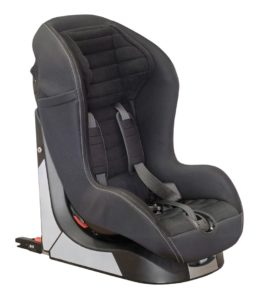
No matter how long your child’s hospital stay has been, going home brings relief for the whole family. Planning ahead for discharge can ensure that the transition home goes smoothly.
About The Discharge Process
As your child’s caretaker, please remember that your child’s discharge instructions are created specifically to fit their condition and recovery needs. If you have any questions at any point either before or after discharge, call your child’s healthcare provider.
If your child requires in-home care from a medical professional, Children’s can help arrange this service or refer you to outside resources as needed.
Here are a few steps to keep in mind as you head home:
- Understand what follow-up care or appointments are needed after discharge, and start keeping track of your questions for what should happen at home.
- Write down all discharge instructions, including medication types, doses, and follow-up appointment schedules. Or use your phone’s voice recording app to save audio notes.
- Find out if your child needs any special medical equipment or supplies at home. Make sure a member of the care team tells you where to get these supplies and how to use them properly — and who to call for equipment replacement.
- Discuss symptoms to watch for after going home and what to do if they develop.
- Ask about over-the-counter medications to ease any symptoms or side effects.
- Make note of any activity limitations or food restrictions — and for how long. Share this with anyone else who shares responsibility for watching your child.
Car Seat Fitting For Infants And Children
 If you’re taking a newborn, an infant, or a small child home, a properly fitted car seat is the first step towards a safe discharge from the hospital. This is why we offer car seat fittings for children of all ages, including newborns.
If you’re taking a newborn, an infant, or a small child home, a properly fitted car seat is the first step towards a safe discharge from the hospital. This is why we offer car seat fittings for children of all ages, including newborns.
At Children’s, we offer Car Safety Services for families. Our nationally certified child passenger safety technicians will check your child’s car seat, teach you how to install a car seat, and provide your family with passenger safety education.
Below is our schedule of when this service is available. Plan to spend about 30 minutes at the appointment. On the day of your car seat safety check, bring the following:
- Your vehicle manual
- Your child’s car seat and manual
- The child who will be riding in the car seat, if possible
- A friend or relative to help
Car Seat Check-Up Schedule
Thursday March 9th, 2023 6 pm – 7:30 pm
Baxter Ford Papillion
14810 Crest Road, Papillion, NE 68138
Questions: (402) 402-955-8090
By Appointment Only: Sign Up Here
Friday April 14, 2023 2 pm – 4:30 pm
Brookside Church- Sponsored by Boys Town Pediatrics
11607 M Circle Omaha, NE 68137
Questions: (402) 955-8090
Thursday May 4, 2023 6 pm – 8 pm
Methodist Women’s Hospital
707 N 190th Plaza, Elkhorn, NE 68022
Questions: (402) 815-1136
By Appointment Only: Sign Up Here
Saturday June 10, 2023 9 am – 11:30 am
African Immigrant Family Services
9012 Q Street Omaha, NE 68127
Questions: (402) 955-8090
Thursday June 22nd 6pm – 8pm
Children’s Physicians-Bellevue Clinic
4802 Shannon Dr. Bellevue, NE 68133
Questions: (402) 955-8090
By Appointment Only: Sign Up Here
If you Can’t make it to one of our scheduled events, you can make an appointment at:
Safe Kids Omaha
Children’s Nebraska
84th St. and West Dodge Rd.
402-955-8090
Sarpy/Cass Safe Kids @ Sarpy/Cass Department of Health and Wellness
701 Olson Dr., Suite 101, Papillion
402-339-4334
General Car Seat Tips
Which Car Seat Is Right For Your Child?
- 0 to 2 years old: Always use a rear-facing car seat in the back seat of the car.
- 2 to 4 years old: Ride in a rear-facing car seat as long as possible, until they reach the height or weight limit set by your car seat’s manufacturer.
- 4 to 7 years old: Now your child may be ready for a forward-facing seat with a harness and tether. When your child outgrows the height and weight requirements for this seat, they can switch to a booster seat.
- 8 to 12 years old: Your child should travel in a booster as long as they fit. When your child has outgrown a booster, they are ready for a regular seat belt.
Note: Children under the age of 12 should be seated in the back seats of the car, NOT the front passenger seat.
A rear-facing car seat can provide better protection than a forward-facing seat. To check whether the car seat is properly fitted, be sure that:
- The car seat is located in the back seat.
- The seat belt is not twisted.
- The seat base is secure. When you tug on the car seat along the belt path, the base should not move side-to-side or front-to-back more than an inch.
- The car seat is installed at the correctly reclined angle, so that your baby can breathe normally.
- Your baby’s back is flat against the car seat. The harness should be snug without pinching at the shoulder.
A car seat should be replaced if:
- The seat has been damaged in a collision.
- Your child has outgrown the car seat.
- The seat has passed its expiration date or is 6 years past the manufacture date (heat and cold can break down the car seat plastic over time).